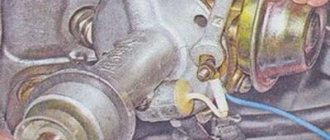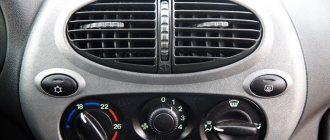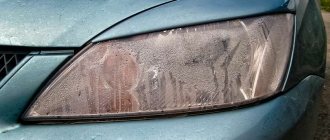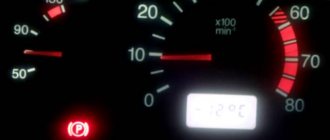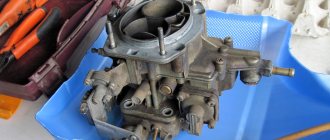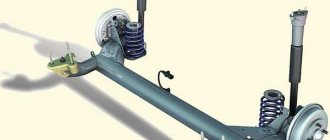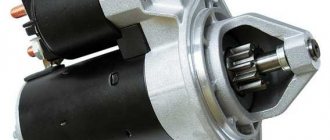VAZ 2110 marked the beginning of a whole family of cars. Some of them are still in production today. This model range is characterized by high reliability and relative simplicity of execution, which is one of the main reasons for the high popularity of the car. However, long-term operation has revealed a number of significant shortcomings. One of them is the cooling system.
It works great on a relatively new car, however, as soon as the service life exceeds 10 years, malfunctions appear in its operation. They ultimately manifest themselves in the same way. The arrow of the device indicating the temperature invariably creeps up. There may be several reasons why the VAZ 2110 engine heats up, and this problem requires detailed consideration.
Common Causes
As you know, the VAZ 2110 is equipped with two types of engines - with 8 and 16 valves. There are several main, most common reasons that cause this overheating of power units.
- Low coolant level in the system
- Failed thermostat
- Faulty radiator cooling fan
- Failed power unit temperature sensor, etc.
Let's look at each of the reasons and ways to resolve these problems separately.
Tens engine
Low coolant level
Coolant plays a huge role in the operation of the cooling system. A special substance, namely antifreeze or antifreeze, is poured into the expansion tank.
Related material:
— Replacement of coolant VAZ 2110
In a normal situation, the level of the coolant solution should be at the level of, or rather the MAX marks on the tank body. This indicates that the container is approximately 50-60 percent full.
If there is no such mark on the tank, refer to the clamp. The liquid should reach its upper edge.
- If the engine overheats, try simply adding the missing amount of coolant so that it is at the optimal filling level.
- If you have not changed the coolant for a long time, it is better not to add new coolant, but simply replace it completely with new coolant.
- When choosing between antifreeze and antifreeze, most VAZ 2110 owners prefer the first. And mainly due to the financial availability of antifreeze. But in practice, antifreeze is better . One of its most important advantages is that the substance does not freeze in severe frosts. For individual regions of our country, this is a key factor in the choice of coolant.
Thermostat
Another reason for engine overheating is a stuck thermostat valve. If it remains in the closed position and does not open, the coolant will move only along a small circuit. As a result, this will lead to strong heating of the power plant. Overheating itself threatens with very, very serious consequences.
Such a malfunction can manifest itself at the most inopportune moment - on the road. You are unlikely to be able to carry out high-quality repairs on the side of the road. But you can try one method - knock on the thermostat housing. Often this allows you to return the device to its functionality for a while. This way you can get to your own garage or the nearest service station. There the thermostat has already been replaced with a new one. There is no point in repairing it. If he failed once, the situation will certainly repeat itself soon.
Related material:
— Replacing the thermostat on a VAZ 2110, how to check and which one is better to install
Thermostat in the engine
temperature sensor
A temperature sensor is necessary in order to respond to changes in engine heating. When a preset point is reached, the sensor is triggered and turns on the cooling fan.
If this device malfunctions, the power unit overheats because the fan does not activate. Consequently, the temperature does not fall below critical levels, but continues to gradually rise.
Related material:
— Coolant temperature indicator sensor for VAZ 2110
If you encounter such a problem on the road (most often the engine overheats when you are in traffic jams, since the engine is running and there is no flow of cooling oncoming air), try to get out of the jam as quickly as possible and find a free section of the road.
Accelerate during the free stretch and then begin engine braking. This will lower the temperature and prevent overheating. Under no circumstances should you regularly operate your car this way. But this is a great way to get to a garage or auto repair shop, determine the cause of the sensor failure, and then replace it.
Cooling Fan
The symptoms of fan malfunctions are similar to a non-working temperature sensor. That is, the engine will heat up, the indicator on the dashboard will be in the red zone.
Related material:
— VAZ 2110 cooling fan does not work
Again, while on the road, we recommend using the engine braking method. Next, head to the garage. Let the car cool down. In the meantime, go to the store for a new fan. This device for the VAZ 2110 costs about 600 rubles.
Fan problems
Other reasons
There are other equally popular reasons for engine overheating. Therefore, we invite you to familiarize yourself with all of them in our table.
| Cause of overheating | Remedy |
| Coolant level too low | Add coolant to the required level, following the marks or clamp on the expansion tank |
| The radiator is clogged or blocked | Flush the radiator. If this does not help, the unit must be replaced |
| The cooling system pump has failed (the impeller slips on its internal shaft) | It's best to replace the pump |
| The oil level in the lubrication system is critical | Add oil to the required level. If it is old, change the oil |
| The ignition timing is incorrectly set | Perform torque adjustment |
| The thermostat has failed | Replace the device with a similar new one |
| The cooling fan motor has failed | It can be repaired, but it is better to install a new motor |
When faced with such a phenomenon as engine overheating, do not rush to send your VAZ 2110 for repair to a car service center. You can find many causes of overheating with your own hands and deal with them yourself. Service station services are not cheap these days, unfortunately.
Loading …
Diagnostics using ODB-2 scanner
The general technical condition of the car can always be checked using a personal diagnostic car scanner. Of the options available on the market, we recommend paying attention to the Korean-made scanner Scan Tool Pro Black Edition. This model is perfectly compatible with most domestic and foreign cars.
A special feature of the device is comprehensive car diagnostics. Unlike analogues, this auto scanner is capable of diagnosing not only the engine, but also ABS, gearbox, transmission, airbag, air conditioning system, etc. The device is also great when used as an on-board computer: in real time it displays speed, revolutions, readings from all available sensors, oil pressure, temperature and much more.
VAZ engine overheating. Causes and consequences
Hello dear readers!
Many car enthusiasts understand: if the engine overheats, nothing good can happen.
Let's figure out what can happen when overheating and why the car overheated, using the VAZ 2110 as an example.
In principle, I do not repair domestic cars, except when friends ask. So it was actually my friends who came to me with this problem. They say it was overheated, the coolant went into the oil, and an emulsion appeared on the oil filler cap. We unscrew the spark plugs and see the presence of coolant in cylinder 3. There is nowhere to go, you need to remove the cylinder head.
They removed and checked the cylinder head, the curve (more than 2 dozen). We send it for milling, and in the meantime we begin to find the cause of overheating. Checked the thermostat - working. We noticed that the radiator was completely clogged - we cleaned it. And they made the assumption that the overheating was due to a clogged radiator.
We take the cylinder head from the milling machine, wash it, install it, change the oil and filter and bleed the cooling system. But that was not the case. It gets hot and doesn't pump. We notice that there is no movement of coolant and we decide to remove the pump (coolant pump).
I assumed that the impeller had turned or the blades had rotted. But what was my surprise when we didn’t find the impeller at all! It was at night, fortunately VAZ was full of spare parts and there were 24-hour stores too.
As a result, the pump is replaced and the car is ready for battle.
Thank you for your attention, have a nice day!
Source
Thermostat replacement algorithm
- Unscrew the cap of the expansion tank to avoid a vacuum;
- Drain the coolant or water, depending on what is poured into the radiator;
- We dismantle the pipes by loosening the clamps;
- Unscrew the old faulty thermostat;
- We clean the surface for mounting serviceable equipment from the remains of old sealant or paint;
- We apply a new, heat-resistant sealant along the contour of the seat, both on the engine and on the thermostat itself;
- We wait a couple of minutes until the sealant begins to set;
- We begin the process of installing the thermostat;
- We connect all the necessary pipes;
- Fill in coolant. In this case, you can use the old one, if it is clean, or the new one.
- We start the car and check the system.
Sources:
https://expertvaz.ru/2110/greetsya-dvigatel-avto.html https://luxvaz.ru/vaz-2110/153-greetsya-dvigatel.html https://ladaautos.ru/vaz-2110/pochemu- ne-greetsya-dvigatel-inzhektor-vaz-2110-prichiny.html https://vaz-2110.ru/dvigatel/pochemu-greetsya-vaz-2110-inzhektor-8-klapanov-prichina.html https://autoflit. ru/461-silno-greetsya-dvigatel-vaz-2110-inzhektor-problema-reshaema.html
The engine of a VAZ 2110 is overheating and what should I do?
VAZ 2110 marked the beginning of a whole family of cars. Some of them are still in production today. This model range is characterized by high reliability and relative simplicity of execution, which is one of the main reasons for the high popularity of the car. However, long-term operation has revealed a number of significant shortcomings. One of them is the cooling system.
It works great on a relatively new car, however, as soon as the service life exceeds 10 years, malfunctions appear in its operation. They ultimately manifest themselves in the same way. The arrow of the device indicating the temperature invariably creeps up. There may be several reasons why the VAZ 2110 engine heats up, and this problem requires detailed consideration.
Car cooling system
The cooling system is made according to the classical design. The coolant circulates in large and small circles. Its transition from one circle to another is carried out automatically using a thermostat. The antifreeze is cooled in a radiator, which is made of aluminum for better heat transfer.
To prevent engine overheating during long-term operation in low gears, the car is equipped with a fan that turns on automatically when the temperature reaches a certain value. The main causes of malfunction of the VAZ 2110 car:
- thermostat failure;
- the fan does not work;
- airlock;
- coolant level is low;
- dirty engine surface.
Any of these reasons may cause the engine to become very hot. As a result, the machine will lose a significant part of its power.
We'll weed out the breakdown
On a VAZ-2110, the temperature indicator on the instrument panel often overestimates the data. It can be up to + 15° C. We already wrote about this in the material: At what temperature does the fan on the VAZ-2110 turn on.
Temperature readings are too high by 10 degrees.
Let's assume that the engine is actually heating up. It may be boiling, or constantly in the red mark. That is, when the cooling fan is activated, the temperature will not drop!
There are almost 100 degrees on the panel, and the fan should turn on, but on the ECU it is 90, as it should be.
What not to do when the engine is boiling
After stopping and opening the hood, many drivers try to eliminate the causes of boiling, not always understanding the process.
Under no circumstances should you open the cap of the expansion tank or radiator . When boiling, that is, significant expansion of the coolant and its transition to a gaseous state, the pressure in the system rises sharply. Opening the plug provokes the release of a significant amount of hot coolant - burns to your hands and face are almost inevitable! At the same time, it is worth taking into account a technical point - liquid leaves, which is designed to equalize the temperature, reducing it in the hottest places.
Do not pour water on a hot engine . A sharp change in temperature can lead to microcracks, which will manifest themselves later, and to cracking of metal parts. But to speed up the cooling process, you can water the radiator.
Driver signals
A specially equipped sensor in each vehicle will currently help to systematically monitor or monitor the temperature of the liquid in the cooling system. In more modern cars it can be slightly modified and display indicators using LEDs, but the essence does not change, the purpose remains the same - to help the driver in signaling the readings.
If you blinked and sent the sensor needle into the red zone, then expect a column of steam from under the hood of your friend in a few seconds. Believe me, there is nothing good here, and no one knows how it will all end.
Now the physical side of the “coin”. Even from driving school, we know that an automobile cooling system consists of large and small circles through which some liquid or water circulates. When starting the engine and up to 90°C
the liquid flows in a small circle, from 90°C and above the thermostat opens and allows flow in a large circle to reduce the overall temperature by lengthening the flow chain.
Accordingly, breakdowns in the thermostat can lead to its failure to open in a timely manner and the coolant to boiling. This means expect a “hello” from the piston rings.
Thermostat and fan malfunctions
A symptom of a faulty thermostat is a sudden increase in temperature for no apparent reason. That is, the car engine was operating in normal mode, there was no long standing in traffic jams or driving in first gear, and the instrument needle was close to the critical mark. Why is this happening? The fact is that, as a rule, the thermostat gets stuck in the closed position.
In this case, the liquid continues to circulate bypassing the radiator, which is not enough to cool the engine. Determining whether the thermostat is really at fault is very simple. It is necessary to warm up the engine to a temperature of 90 °C. Now you should evaluate the temperature of the pipe that goes to the radiator. If it is cold, the thermostat must be replaced.
Unlike the previous case, engine overheating is preceded by prolonged operation in low gears. In this mode, the VAZ 2110 radiator does not have sufficient airflow and when the temperature reaches 95 ° C, a sensor is triggered that turns on the fan. If this does not happen, engine overheating is inevitable. Such damage is complicated by the fact that faults, in addition to the fan itself, can occur in its power supply circuit.
As a special case, a blown fuse should be mentioned. In addition, the sensor itself may fail. This is why it is so important to correctly identify the faulty unit. You can do this as follows. It is necessary to close the contacts of the sensor; it is installed on the radiator. Be careful when performing this operation. The engine must be turned off and the ignition turned on.
If the fan motor starts to spin when the contacts are closed, the sensor is faulty. If not, then the problem may be in the fuse and you need to check it. If it is in good working order, further repairs require skills and the presence of a special device, so it is better to contact a specialist.
Air lock and coolant level
In this case, overheating is preceded by some action with the coolant. This could be draining it for repairs or completely replacing it. An air lock formed in the system prevents normal circulation.
You can try to get rid of it by slightly raising the front wheels of the car. To do this, the car must be placed on a hill, after which it must be allowed to idle. If this does not help, then you need to do the following:
- remove the return pipe from the throttle assembly;
- it is necessary to fill the reservoir with coolant;
- start the engine and wait until antifreeze runs out of the remote control fitting, then plug it with your finger;
- Now you need to wait until the liquid comes out of the hose, and then put it in place.
Here it is appropriate to say one more thing. The systematic formation of air jams can be associated with a very unpleasant malfunction - damage to the cylinder head gasket. But this requires the intervention of specialists and can seriously hit the wallet.
Overheating of the VAZ 2110 engine can be caused by a lack of coolant. This can happen for natural reasons, due to its evaporation or, more often, in the event of a leak. Over time, the tightness of the seals is broken and rubber parts lose their elasticity. All this leads to antifreeze leakage. If the problem is not corrected in time, it can lead to serious damage to the power unit.
A dirty surface is a common cause of engine overheating. It's no secret that power units whose mileage has exceeded 200,000 km are usually covered with an oil film on which a thick layer of dust settles. This impairs engine cooling by air flows that circulate in the engine compartment.
To exclude such a development of events, it is necessary to carefully seal all connections of the power unit. In addition, you need to systematically remove oil stains from it. In addition to the engine, the radiator itself may become dirty. This, naturally, will also worsen cooling, and the motor may begin to get very hot. In this case, it is necessary to carefully blow out the radiator with a compressor.
The engine of the VAZ 2110 car has a simple design and a long service life. However, we must not forget that for normal operation it requires appropriate care and systematic maintenance.
Source
Consequences of untimely elimination of defects
Not all drivers realize the consequences of engine overheating and continue driving with a constantly running fan or frequent overheating. Thus, the consequences of strong engine heating are divided into 3 stages, which should be considered separately.
Slight overheating
If the engine overheats for up to 10 minutes, the consequences may be minor. Thus, cracks will appear in the pipes of the cooling system, the temperature sensor will fail, the oil scraper rings will be deformed, the valve seals and the camshaft will melt. Additionally, the valves burn out and oil enters the combustion chambers, which will be indicated by the release of black smoke from the exhaust system.
Consequences of slight overheating, namely valve burnout.
Significant overheating
With significant overheating, deformation occurs, or rather deflection of the cylinder head. To eliminate these consequences, you will need to disassemble the cylinder head and give it a groove on the surface. Thus, it turns out that the block head needs to be modified.
Burnout of the piston assembly due to significant overheating Measuring the cylinder head deflection using a ruler
Severe overheating
With severe overheating, the walls of the cylinder block are deformed and burnt, which causes the piston assembly to melt, the connecting rods to become deformed, or even the crankshaft to break. Consequently, the engine cannot be repaired, since usually the walls of the power unit are destroyed and their restoration is impossible.
Burnout and deformation of pistons after severe overheating Melting of the walls of the cylinder block after overheating
Prevention
From time to time, you should prevent engine overheating in order to avoid unpleasant situations in the future. In terms of costs, this costs little money, but in the end it can save the engine from breakdown. You can identify the “weak link” by eliminating, gradually checking suspicious parts for malfunction.
In addition, overheating of the engine can occur if the wrong mode of operation of the motor is selected. For example, if you constantly drive only in lower gears and at high speeds, then the likelihood of the engine boiling increases, especially if there are deviations in the operation of the cooling system. In the cold season, some errors are not affected by low temperatures, but this does not mean that engines boil only in the summer.
content .. 14 15 16 17 ..
What not to do when the engine is boiling
There are a number of strict rules that limit the driver’s actions during a situation when antifreeze boils in the radiator, expansion tank or other element of the cooling system. These rules are designed to protect human health from causing serious injury, and to minimize material losses that may arise in the described situation.
- Do not load the engine (do not accelerate, but instead you need to reduce the speed to idle as much as possible, usually around 1000 rpm).
- Do not stop abruptly and turn off the engine, thinking that the engine will stop boiling; on the contrary, everything will only get worse.
- Do not touch hot parts in the engine compartment!
- While steam is coming from under the cap of the expansion tank or other unit and while the antifreeze is bubbling in the system, you should absolutely not open the cap of the expansion tank! This can only be done after the time specified above has passed.
- Do not pour cold water on the engine! You need to wait for the engine to cool down on its own.
- After the engine has cooled down and new antifreeze has been added, you should not drive after the temperature reaches more than +90 degrees.
Compliance with these simple rules will ensure the safety of the driver, and also minimize the degree of breakdown and, consequently, possible material costs.
Insufficient coolant level
In the expansion tank of your car, the level of coolant should be almost equal to the half of the tank. If you look at the mark, it turns out to be the top mark on the tank body with the MAX mark. If there is no such mark, then most likely it will be located along the upper edge of the clamp.
If necessary, add antifreeze or antifreeze to the required level. It is worth noting another fact that in winter, if its level is insufficient, the stove may not work efficiently, that is, the air will not blow as hot as during normal operation of the heater.
Pump malfunction
- If the pump malfunctions, the coolant stops circulating through the cooling system, therefore the liquid does not pass in a large circle and is not cooled.
If you own a VAZ 2110 or a similar domestically produced car, then you can write below in the comments about the problems that you have encountered, and perhaps this will help to more fully answer the question: “Why does the VAZ 2110 get hot?”
Similar articles:
- Replacing the windshield wiper motor and trapezoid
- The stove doesn't heat well
- Replacing the stove radiator
- Replacing coolant (antifreeze or antifreeze)
- Why does the car stall?
